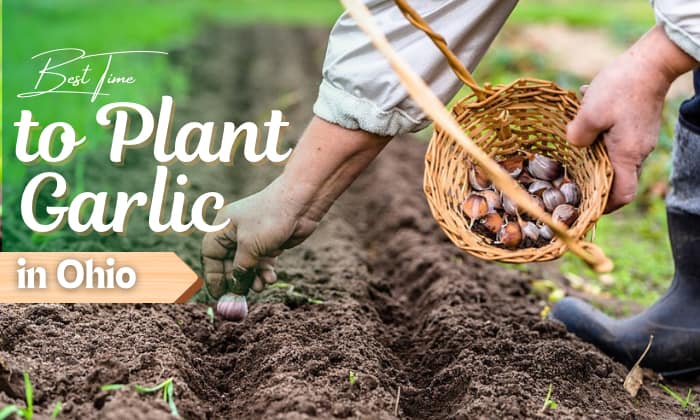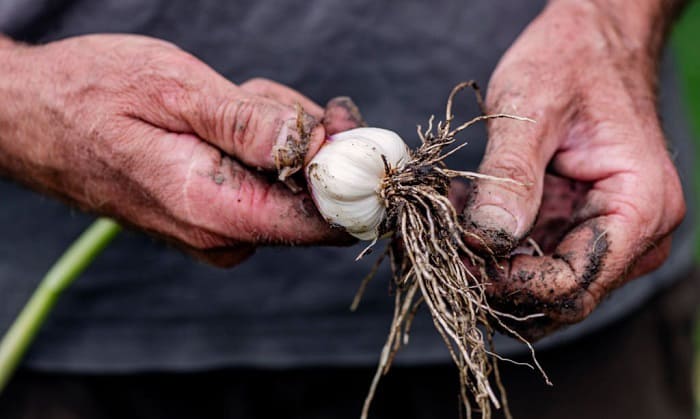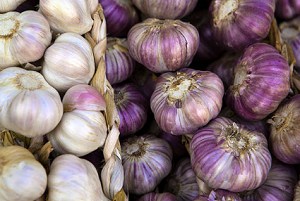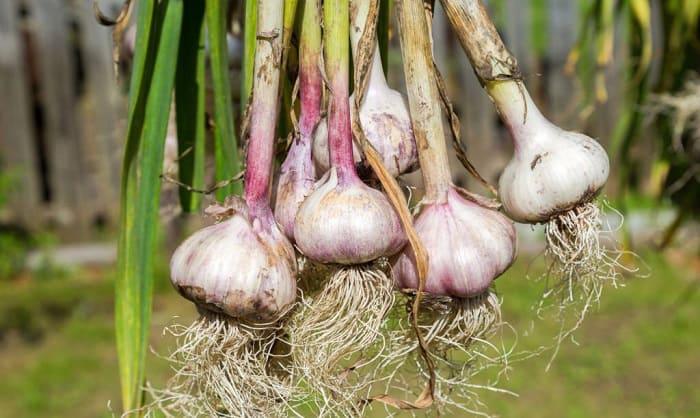Garlic is a fantastic crop to grow at home as it is a staple ingredient in many recipes. However, before you grab your gardening tools, you must first know how and when to plant garlic in Ohio.
Garlic is usually planted in autumn, whose start is signaled by the autumnal equinox, occurring anytime from September 21 to 24. In practice, planting garlic in Ohio is best done between Halloween and Thanksgiving when there’s no frost. Throughout winter, the plant enters dormancy and continues to grow again in the spring season.
Table of Contents
Best Time to Plant Garlic in Ohio
Many of Ohio’s cities are in hardiness zone 6, and few areas in central and in NE Ohio are in zone 5. The best time to plant garlic in Ohio is around September to November.
For a more accurate gardening date, is it recommended to check the estimated first fall frost in your area and plant fall garlic about 3 weeks before it. Here are some examples:
- Cleveland, in northeast Ohio, is estimated to have the first frost on Nov 07, and counting back 3 weeks, garlic cloves should be planted by October 17.
- In Knox, central Ohio, the first fall frost is expected to arrive by Oct 05, so planting garlic can commence around September 14.
- In Cincinnati, in southern Ohio, the first frost will set in by October 20 and therefore, garlic cloves should be in the ground by September 29.
How to Plant Garlic?
Growing garlic in Ohio is relatively simple and can be accomplished even by beginners. Here are some garlic gardening tips to guide you.
Things you’ll need
- Healthy garlic cloves/ bulbs
- Well-draining soil
- Gardening tools
- Fertilizer (as needed)
1. Buy Garlic Cloves from Reputable Sources
Buy garlic bulbs for planting from your local nursery. You can also visit any garlic farm Ohio has; buying from them will ensure that the cloves you get are healthy and disease-free.
Planting store-bought garlic is often discouraged as those are usually treated with growth inhibitors; hence, your cloves might not sprout at all. Another thing is that they might be grown in a climate that’s different from yours and might not be able to adapt to your local environment.
Garlic flower stalks may produce seeds, but do not plant garlic seeds as there is a high possibility that these will not grow and develop bulbs. The surefire way to grow garlic is by planting them through garlic cloves.
2. Check the Variety
Garlic is usually classified into two varieties: hardneck and softneck. The variety to plant is often dictated by your location and climate. Take a look at the pictures illustrating the physical differences of the two varieties.
- Hardneck varieties are more suited for those in northern Ohio as they are more tolerant to cold winters. They produce fewer but bigger cloves per bulb and have stems/scapes which must be cut to achieve the plant’s optimum bulb size.
Examples of hardneck varieties are Music, Georgian Fire, and Georgia Crystal.
- Softneck varieties produce smaller cloves per head and store better than hardneck varieties. They are more suited for gardeners in southern areas as this variety prefers warmer climates.
The most common softneck cultivars in Ohio include Broadleaf Czech, Italian Late, and Red Toch.
Related:
3. Growing Requirements
Garlic is planted in the fall and allowed to go dormant throughout the winter season after establishing its root system. Once the roots are healthy, the plants will continue to develop in the spring and the bulbs will be ready for harvest in mid-summer.
- Soil pH for garlic planting should be between 0 and 7.0. Testing is important so that you’ll know which nutrients are available in the soil and which amendment is needed.
- Plant garlic cloves root side down, 4 to 8 inches apart and 2 inches deep. Protect them from harsh winters by covering them with mulch, and make sure your garlic rows are 12 inches apart.
- Place the plant in an area with full sun exposure lasting 6 to 8 hours per day.
- Cut off the scrapes or stems that emerge during spring. This allows the plant to focus its energy on growing the bulb rather than producing flowers. Remove the mulch once frost disappears as well.
- Water the plant every 3 to 5 days during the bulbing period – an inch of moisture per week will do. Reduce watering when the leaves show signs of withering as this indicates that the bulbs will be ready for harvest soon.
4. Pest Management
Pest infestation is not a common problem for garlic plants. Thrips can cause garlic leaves to discolor and develop dry spots, but the quality of the bulb will not be affected. To control these insects, use Entrust insecticide and remove weeds from the garden.
As for diseases, bloat nematodes can cause significant damage to garlic heads and cloves. Inspect garlic cloves for signs of nematodes such as abnormal root branching and lesions or smaller, yellow leaves. Treat the condition by soaking the bulbs in 120℉ water for 20 minutes.
Frequently Asked Questions
How deep do you plant garlic in Ohio?
Garlic cloves should be planted at least 2 inches in the soil. Avoid planting them too deep as this can lead to poor growth, since the sun will not reach the clove. Planting too shallow, on the other hand, might expose the clove to harsh elements that will likewise hamper its development.
Does garlic grow well in Ohio?
Although not a top producer in the country, garlic can grow well in Ohio’s soil and climate, provided it is given the proper care as it grows.
When to harvest garlic?
If you planted in the fall, harvest garlic in Ohio in late June to August. The cloves are ready when the leaves are turning yellow but not yet completely dry. To harvest, carefully dig a mature garlic plant using a garden fork, lift it up, and remove excess soil from the roots and bulb.
How to store garlic?
Hang harvested garlic plants upside down and leave them to dry for about 2 weeks. They are ready to be stored when the roots are dry, and the bulb’s wrapper is dry and paper-like in texture.
Just trim the roots and put the bulbs in a cool area with 55 degrees temperature. You should also keep them away from sunlight and moisture.
Can garlic be planted indoors?
If your residence does not have a backyard, you can definitely plant garlic in pots. It is uncommon for garlic to be grown indoors as these plants love the sun, but you can certainly place them near windows that receive six hours of sunshine per day.
Can garlic be planted in February?
Residents in locations with milder climates can plant garlic as late as February and March. However, the drawback of doing so is that the garlic bulbs will be smaller compared to those planted in fall.
Conclusion
Growing your own garlic is an excellent way to have access to fresher and more economical produce. All you need to do is fulfill their growing requirements and know when to plant garlic in Ohio. Doing so often leads to healthy plants and abundant harvests.

Hi, I am William – Floridayards’ digital content creator. My job is to find answers to all your concerns with thorough research and our team’s expert advice. I will also bring you honest reviews on the best products and equipment for raising your beautiful garden. Please look forward to our work!















